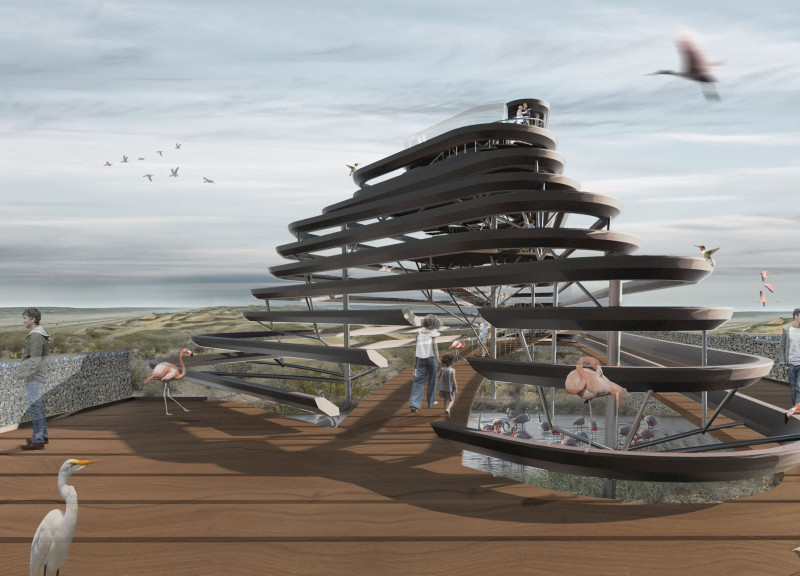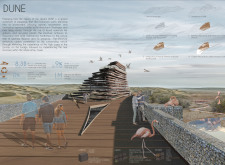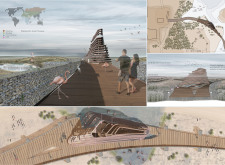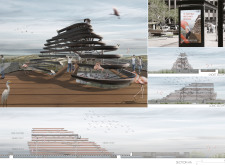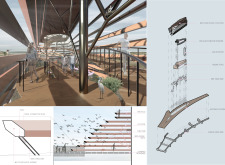5 key facts about this project
The design consists of viewing platforms and pathways that provide access to the wetland. A distinctive observation tower forms the focal point of the project, offering elevated views of the surrounding environment. This feature encourages wildlife observation and promotes ecological awareness among visitors. The architectural elements are organized to facilitate efficient flow and interaction with the space while respecting the delicate ecosystem present.
Sustainability is a key factor in the DUNE project. The use of recycled materials, particularly in the building's façade made from recycled plastics, highlights the commitment to eco-friendly design. This choice addresses the issue of plastic waste, converting it into a functional architectural component. The incorporation of gabion structures enhances the durability of the building while allowing for natural water absorption and promoting local flora growth. Additionally, the use of wood for decking provides a tactile connection to the environment while ensuring environmental consciousness.
The DUNE project stands out due to its biophilic design that emphasizes a connection to nature. By integrating educational components that inform visitors about the local ecology, the building serves as a learning environment in addition to its architectural purpose. The inclusion of feeding pods for native wildlife further suggests an active engagement with and support of the local ecosystem.
Visitors are encouraged to explore additional details about the DUNE project through its architectural plans, sections, and overall design to fully understand its innovative approach and implications. This examination can provide further insight into the architectural ideas at play and the project's potential impact on sustainable building practice.


